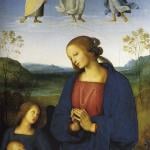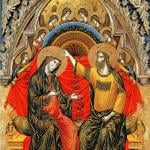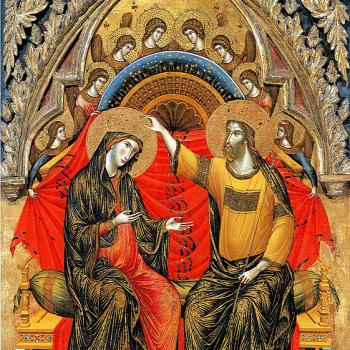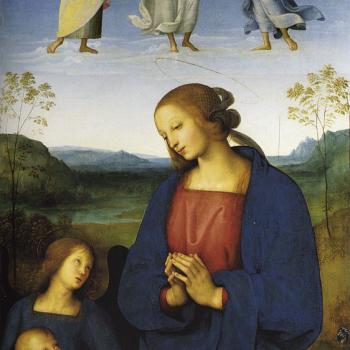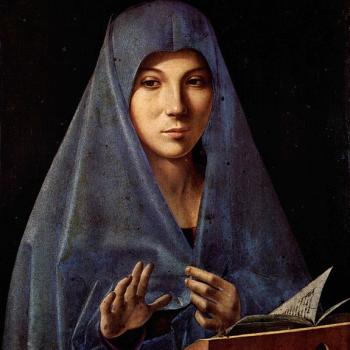Including: Espousal by Earliest Protestants; Scriptural Arguments; St. John Henry Cardinal Newman’s Reflections
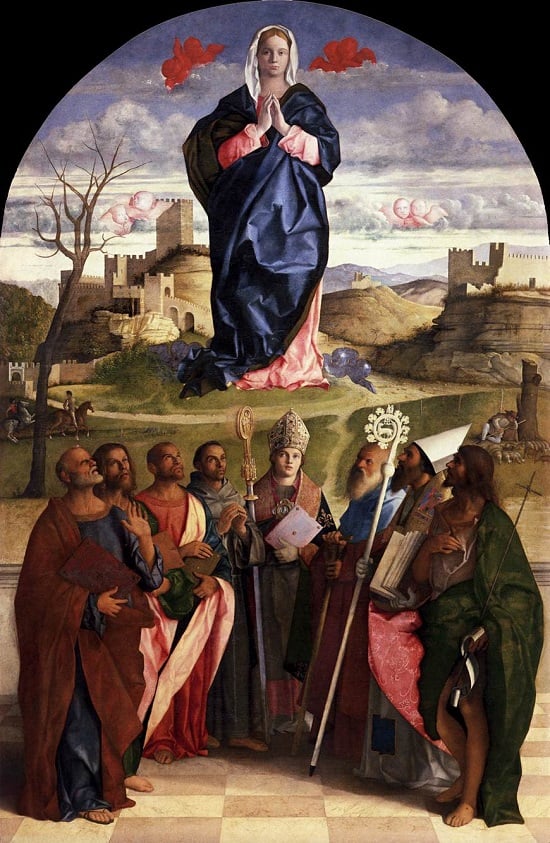
Norman L. Geisler (1932 – 2019) was an American evangelical Protestant theologian, philosopher, and apologist. He obtained an M.A. in theology from Wheaton College and a Ph.D. in philosophy from Loyola University, and made scholarly contributions to the subjects of classical Christian apologetics, systematic theology, philosophy of religion, Calvinism, Catholicism, biblical inerrancy, Bible difficulties, biblical miracles, the resurrection of Jesus, ethics, and other topics. He wrote or edited more 90 books and hundreds of articles.
Dr. Geisler was the Chairman of Philosophy of Religion at Trinity Evangelical Divinity School (1970–79) and Professor of Systematic Theology at Dallas Theological Seminary (1979–88) and a key figure in founding the Evangelical Philosophical Society. He also co-founded Southern Evangelical Seminary. He was known as an evangelical Thomist and considered himself a “moderate Calvinist”. He was not an anti-Catholic (i.e., he didn’t deny that Catholicism was fully a species of Christianity).
This is one of a series of comprehensive replies to his book, Roman Catholics and Evangelicals: Agreements and Differences (co-author, Ralph E. MacKenzie, graduate of Bethel Theological Seminary-West; Grand Rapids, Michigan: Baker Academic, 1995). It’s available online in a public domain version, which has no page numbers, so I will utilize page numbers from my paperback copy, for the sake of full reference. I consider it the best Protestant critique of Catholicism (especially in terms of biblical arguments) that I have ever found, from any time period. The arguments are, for the most part, impressively presented, thought-provoking, respectful, respectable, and worthy of serious consideration (which I’m now giving them).
I’ll be concentrating on the eight sections of Part Two: “Areas of Doctrinal Differences” (202 pages). These installments will be listed and linked on my Calvinism & General Protestantism web page, in section XVII: “Catholics and Protestants” (second from the end). Dr. Geisler’s and Ralph MacKenzie’s words will be in blue. My biblical citations are from RSV.
*****
The Roman Catholic dogmas concerning Mary reveal a progressive glorification of her. According to official Catholic doctrine, Mary moved from being sinless to being immaculately conceived to being bodily assumed into heaven and even venerated as Mediatrix (a mediator of grace) and “Queen of Heaven.” (p. 311)
Martin Luther, the founder of Protestantism, believed in Mary’s Assumption, so this isn’t just a Catholic (or a “progressive glorification” thing). Dr. Geisler appears to be unacquainted with his own Protestant heritage on this score. Lutheran scholar Eric W. Gritsch, who was a major translator in the English set, Luther’s Works (edited by Jaroslav Pelikan), observed:
Luther affirmed Mary’s assumption into heaven but did not consider it to be of benefit to others or accomplished in any special way. (in The One Mediator, the Saints, and Mary, Lutherans and Catholics in Dialogue VIII, edited by H. George Anderson, J. Francis Stafford, Joseph A. Burgess, Minneapolis: Augsburg Fortress Press, 1992, 241; footnote 44; p. 382: “Sermon on the Festival of the Assumption, August 15, 1522. WA 10/3:269.12-13. Sermon on the Festival of the Visitation . . . August 15, 1522. WA 52:681.27-31.”; my bolded emphasis)
In the same book, twelve Lutheran and ten Catholic scholars participated. Their “Common Statement” (a sort of creed-like formulation agreed-upon by all) yielded some very interesting conclusions indeed:
(89) Luther preached on the Assumption . . . There were early Lutheran pastors who affirmed the Assumption as both evangelical and Lutheran.
(101) From the Lutheran side, one may recall the honor and devotion paid to the Mother of God by Luther himself, including his own attitude to the Immaculate Conception and the Assumption, which he accepted in some form. (p. 55; my bolded emphasis)
In a 1532 sermon Luther refers to Mary’s “ascension” (see, Susan C. Karant-Nunn and Merry E. Wiesner-Hanks Luther on Women: A Sourcebook; New York: Cambridge University Press, 2003, pp. 46-47).
Huldreich Zwingli, the “reformer” of Zurich and the third most important Protestant founder, allowed “the celebration of Mary’s assumption to continue being celebrated with a Feast Day in the church” (see: Following Zwingli: Applying the Past in Reformation Zurich, edited by Luca Baschera, Bruce Gordon, and Christian Moser [Burlington, Vermont: Ashgate Publishing Co., 2014], and its chapter 6: “Reforming a Model: Zwingli, Bullinger, and the Virgin Mary in Sixteenth-century Zurich,” by Rebecca A. Giselbrecht (pp. 137-174); citation from p. 152)
“[Heinrich] Bullinger [Zwingli’s successor at Zurich] leans on Eusebius, contending that the Virgin Mary, the mother of Jesus Christ, was taken up to her son in heaven . . .” (Giselbrecht, ibid., p. 162). Bullinger further wrote:
The pure and immaculate embodiment of the Mother of God, the Virgin Mary, the Temple of the Holy Spirit, that is to say her saintly body, was carried up to heaven by the angels. (De Origine Erroris [16], from 1568; see more about the source)
Fr. Dwight Longenecker, in a debate book about Mary with Episcopalian David Gustafson, noted how many Anglicans have accepted Mary’s Assumption in faith:
[I]t was held by Lutherans at the Reformation and by many Lutherans today. It is also affirmed by the Anglican Church. The Scottish Anglican lectionary actually celebrates a feast of the Falling Asleep of Mary on the fifteenth of August just as the Orthodox and Catholics do. The new lectionary in the Church of England also institutes a Marian feast on the fifteenth of August in keeping with the tradition. Even your own Episcopal Church of the USA celebrates a Marian feast on the traditional date for the Feast of the Assumption. On that day Episcopalians pray, “O God, you have taken to yourself the Blessed Virgin Mary, . . . grant that we may share with her the glory of your eternal kingdom.” . . . If you allow for the Assumption as a permissible pious opinion, you’ve left the door open, and that isn’t really “heretical denial.” (Mary: A Catholic-Evangelical Debate, Gracewing Publishing, 2003, 128-129; see more about historic Protestant affirmation of Mary’s Assumption)
Most Catholic authorities admit that Mary died. According to Paul (Rom. 5:12), however, death is a punishment for sin. It begs the question to say that Mary
did not die a natural death; if she was sinless, why should she die at all? (p. 315)
Well, because Jesus did. He was sinless, yet He died. Likewise, Mary . . . Now I will make several scriptural arguments for Mary’s Bodily Assumption. Some of these were touched upon by Dr. Geisler in this section, but not in adequate depth (a criticism I would make of much of his book).
Catholics believe that all Catholic and Christian doctrines must be in harmony with Scripture; must not contradict it; also, that some doctrines are able to be supported only indirectly, implicitly, or by deduction from other related Bible passages. All Catholic doctrines have scriptural support in some sense (this is my main specialty as an apologist). We also believe in Sacred Tradition: itself always in harmony with Scripture. Sometimes (as in the present case), a doctrine is “stronger” in Tradition.
I agree that there is no direct “proof” of Mary’s Assumption in Scripture. But there is strong deductive and analogical evidence. The deductive argument has to do with the “consequences” of Mary’s Immaculate Conception: a doctrine more directly indicated in Scripture (e.g., Lk 1:28). Bodily death and decay are the result of sin and the fall of man (Gen 3:16-19; Ps 16:10). An absence of actual and original sin would allow for instant bodily resurrection. It’s as if Mary goes back to before the fall (for this reason the Church fathers call her the “New Eve”).
Jesus’ Resurrection makes possible universal resurrection (1 Cor 15:13, 16), and redemption of our bodies as well as souls (1 Cor 15:20-23). Mary’s Assumption is the “first fruits,” sign, and type of the general resurrection of all (created) mankind; she exemplifies the age in which death and sin are conquered once and for all (1 Cor 15:26).
The analogical argument is a second line of approach: biblical examples that have strong similarity in important respects to Mary’s Bodily Assumption. Here are five such analogies:
2 Kings 2:1, 11 . . . the LORD was about to take Eli’jah up to heaven by a whirlwind, . . . [11] . . . And Eli’jah went up by a whirlwind into heaven.
2 Corinthians 12:2-3 I know a man in Christ [i.e., Paul himself] who fourteen years ago was caught up to the third heaven . . . [3] And I know that this man was caught up into Paradise — whether in the body or out of the body I do not know, God knows —
1 Thessalonians 4:16-17 . . . And the dead in Christ will rise first; [17] then we who are alive, who are left, shall be caught up together with them in the clouds to meet the Lord in the air; and so we shall always be with the Lord.
Hebrews 11:5 By faith Enoch was taken up so that he should not see death; and he was not found, because God had taken him. . . . (cf. Gen 5:24)
Revelation 11:11-12 But after the three and a half days a breath of life from God entered them, and they stood up on their feet, . . . [12] Then they heard a loud voice from heaven saying to them, “Come up hither!” And in the sight of their foes they went up to heaven in a cloud.
In three of these instances, the person didn’t die (in one the person even came back); in two they died first. The Church hasn’t declared whether Mary died or not. All of these events occur by virtue of the power of God, not the intrinsic ability of the persons. Jesus ascended by His own power, but the Blessed Virgin Mary was assumed by the power of her Son Jesus’ victory over death. Hers was an “immediate resurrection.” One day all who are saved will be bodily resurrected. Mary was the first after the Resurrection: quite appropriately (and even, I submit, “expected”), since she was Jesus’ own Mother.
There is more about Mary’s Assumption in Scripture than there is about the biblical canon and the definition and exact nature of sola Scriptura: that is, nothing at all in both cases; zip, zero, zilch. The Bible never lists its own books. The “Table of Contents” comes entirely from Christian tradition. Yet Protestants accept it (minus seven books); and this is contrary to sola Scriptura. There is no ironclad proof in Scripture of which books may be considered Holy Scripture. There is no strictly biblical argument at all. It’s an argument entirely from tradition and Church authority.
Despite all this, we are unreasonably asked to prove everything we believe as Catholics, from explicit biblical passages. I don’t think the Assumption is biblically implausible in the least. All it’s saying is that Mary received her resurrected body first among the saints (all of whom will eventually do the same thing). The mother of Jesus our Lord and Savior didn’t have to undergo the decay of death. This belief is not contrary to anything in Scripture.
St. John Henry Cardinal Newman eloquently wrote about this topic:
Not till the end of the fourth century did the Church declare the divinity of the Holy Ghost . . . Of course it was held by implication, since the Holy Trinity was believed from the first – but I mean the bare absolute proposition `the Holy Ghost is God -‘ . . . The Assumption of our Lady is more pointedly and in express words held by all Catholics, and has been for a thousand years, than the proposition `The Holy Ghost is God’ was held by the Catholic world in St. Basil’s time. There has been a gradual evolution of Apostolic doctrine or dogma, as delivered from our Lord to the Church. If the Assumption of Our Blessed Lady were now defined at the Vatican Council [1870], I should say that plainly it, as the Immaculate Conception, is contained in the dogma `Mary the Second Eve’ . . . If Mary is like Eve but greater, then, as Eve would not have seen death or corruption, so while Mary underwent death because she was a child of fallen Adam, she did not see corruption because she had more than the prerogatives of Eve. (Letter of 10 September 1869)
What dignity can be too great to attribute to her who is as closely bound up, as intimately one, with the Eternal Word, as a mother is with a son? . . . Is it surprising then that on the one hand she should be immaculate in her Conception? or on the other that she should be honoured with an Assumption, and exalted as a queen . . .? Men sometimes wonder that we call her Mother of life, of mercy, of salvation; what are all these titles compared to that one name, Mother of God? (“Letter to Pusey”, Difficulties of Anglicans, vol. 2, 1875, 62-63)


